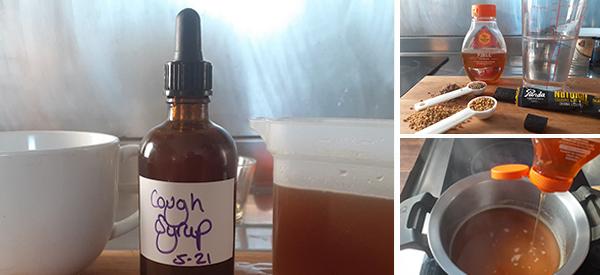
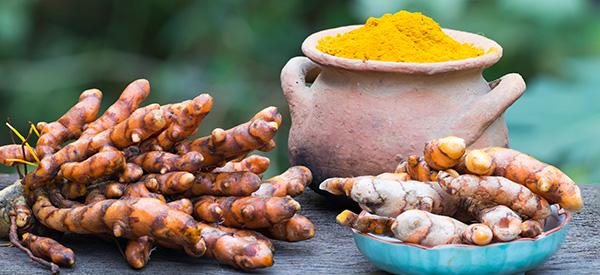
50 Health Benefits Of Turmeric
POSTED SEPTEMBER 7, 2021 BY STACY FILTON IN ALL ARTICLES, BACKYARD PLANTS, HOUSEHOLD REMEDIES33
You know what they say, sometimes the best things in life can be found in the kitchen. While this may not be a saying that you are familiar with it is one that is very true in many ways. Currently, there are many studies going on exploring the humble spice cabinet and what it has to offer as far as health. Today, turmeric is going to be explored along with the health benefits beyond a tasty plate of curry.
1. Treatment For Borderline Diabetes
While consuming turmeric will not cure your diabetes, studies have found that those who were borderline diabetic could benefit from consuming turmeric. There is evidence that curcumin lowers blood sugar and encourages the body to produce more insulin.
2. Good For Weight Loss
The weight loss solution can be complex but many natural health experts believe that eating dishes that contain turmeric will speed up the body’s metabolism and prevent fat from accumulating, which will help with weight loss along with a healthy diet and exercise.
Related: 1 Cup Before Bed Shrinks Belly Fat All Night (Video)
3. Helps Reduce Damage Caused By Alcohol
Any amount of alcohol can cause harm to the body but the curcumin in turmeric helps protect the liver, brain, and other organs from possible damage. Now, this does not mean that you should eat large amounts of turmeric or consume curcumin in pill form before drinking. What it does mean is that this spice does provide some protection for the organs that could be damaged due to alcohol consumption.
4. Reduce Damage Caused By Smoking
If you are a smoker, you may consider eating more dishes that contain turmeric. The curcumin in turmeric seems to reduce the damage caused by nicotine. But one should not take this advice and start smoking. The best way to reduce nicotine damage is not to smoke.
5. A Treatment For The Flu
If you are not in a high-risk group, giving turmeric or golden milk a try is worth the effort before going to the doctor.
Drinking this milk is used in India as a treatment for the flu and coughs.
6. A Treatment For Asthma
Now, do not stop using your inhaler as you need it but if you have asthma you may want to try sprinkling some turmeric on your food. It is believed that turmeric opens up the respiratory system so that it is easier to breathe.
Related: Homemade Allergy and Asthma Support Tinctures (Learn More)
7. A Treatment For Bronchitis
As with asthma, if you have a case of bronchitis you may find that consuming turmeric milk or taking curcumin in pill form makes it easier to breathe.
Related: Homemade Bronchial Blend Tincture (Learn More)
8. Helps Your Teeth
Yes, there is such a thing as turmeric mouthwash and yes it does help with teeth health by removing plaque. Now, this is just a preventative measure. You should still see your dentist regularly, floss, and brush your teeth along with eating healthy.
9. A Natural Painkiller
Since turmeric acts as an anti-inflammatory, this explains why it works as a pain killer. While you could eat a dish containing turmeric to get pain relief, turmeric oil is recommended as the means by which you receive your curcumin and relief.
10. Provides Antioxidants For The Hair
Yes, free radicals can attack the hair. Using hair care products containing turmeric is a great way of keeping your hair protected from free radicals.
11. Slows Down Aging
Nothing can truly stop aging but turmeric and slow it down in several ways. First, curcumin in turmeric can help keep the blood vessels flexible. Second, it can improve blood flow to the brain, which many believe can offset the mental decline. If you are a woman and postmenopausal, consuming dishes with turmeric can reduce bone loss.
12. Heart Attack Reducer
When it comes to heart protection, turmeric does several things. It attacks free radical compounds that damage cells and have the potential of causing an infection.
Turmeric also reduces the risk of cholesterol blocking the arteries, which can cause a heart attack.
13. May Prevent Eye Degeneration
If you have or know someone with glaucoma, you understand the discomfort and degeneration of the eye that this disease brings.
A new treatment is being developed that uses curcumin in an eye drop form. Results are promising but more studies need to be done.
14. Possible Treatment For Depression
Turmeric has the ability to increase BDNF, which a lower level of BDNF can be a contributing factor to depression.
In recent studies, taking curcumin in pill form showed promising positive results as far as depression symptoms.
15. Fights Dandruff
Taking advantage of turmeric’s anti-inflammatory and antibacterial properties opens the door to new products that are used to treat dandruff. Treating both the inflammation and bacterial problems caused by dandruff will reduce the occurrence of dandruff.
16. May Improve Skin Health
Since turmeric is an anti-inflammatory, antioxidant, and antimicrobial, it is being looked at as a treatment for several skin conditions. This includes photoaging, psoriasis, and eczema.
17. Possible Treatment Of Rheumatoid Arthritis
If one has rheumatoid arthritis, you are very familiar with the joint pain that this disease is known for. Presently studies are being done on using curcumin to treat joint pain and swelling due to this spice’s anti-inflammatory and pain-relieving characteristics.
Related: The Most Powerful Herbs for Rheumatoid Arthritis (Learn More)
18. May Ease The Symptoms Caused By Osteoarthritis
A study using mice has shown that consuming curcumin in pill form slowed the advancement of osteoarthritis. When it comes to the pain associated with osteoarthritis, a topical curcumin treatment is currently being tested.
19. May Aid In The Treatment Of Cancer
This humble spice may prevent cancer cells from growing and spreading in certain cancers, which include breast, prostate, pancreatic, and/or colorectal.
20. Possibly Could Prevent Certain Cancers
Currently, studies are being done on using curcumin in pill form as a preventative measure to stop colorectal, breast, prostate, and/or pancreatic cancer cells from forming in the first place.
21. Aid In Digestion
It has been shown that turmeric acts as a gut anti-inflammatory and as an aid to help with gut permeability, which is a very important factor when it comes to healthy digestion.
22. Help In Premenstrual Syndrome
Some women found relief from their PMS and cramps by consuming curcumin supplements.
23. Controls Oil In The Hair
The anti-inflammatory and anti-microbial properties of turmeric make it a wonderful treatment for oily hair. While the anti-inflammatory aspect of turmeric may make sense in this benefit, the anti-microbial may not. Oily hair tends to attract organisms that live in the oil. The anti-microbial properties take care of this problem.
24. Aid In Irritable Bowel Syndrome
Studies have shown that consuming turmeric can help in the abdominal pain that irritable bowel syndrome causes.
25. Treatment For Crohn’s Disease
Turmeric is being studied as a treatment for the pain, and depression that Crohn’s Disease can cause.
26. Treatment For Ulcerative Colitis
This herb is currently being considered as a possible treatment for ulcerative colitis due to its ability to treat pain, which can occur in the joints, rectum, and/or abdomen.
27. Turmeric As A Skin Moisturizer
Creating a facial mask of milk and turmeric is a wonderful way of moisturizing the skin. The key to this approach is to allow the ingredients to work. Both turmeric and milk will help remove dead skin cells so that the skin can drink up the moisture.
28. Skin Wounds Related To Cancer
Certain cancers can cause skin itching and sores that smell. A turmeric ointment is being studied as a possible treatment for skin wounds caused by cancer.
29. Possible Treatment For Headaches
Since turmeric is in the same family as ginger, it is believed to be a possible treatment for headaches especially migraines.
30. Prevents Hair Loss
One cause of hair loss is due to inflammation. Since turmeric is known for its anti-inflammatory abilities, using a product with turmeric in it can reduce inflammation and stimulate hair growth.
31. Treatment For Acne
Due to turmeric’s anti-inflammatory and antibacterial properties, it is believed that this spice could be used in the treatment of acne.
32. Improve Immune System
Turmeric is a ball of wonder when it comes to what it can do for the immune system. It is anti-inflammatory, antibacterial, and antimicrobial. Consuming foods with turmeric in it will allow you to benefit from all this goodness but there is one catch.
The chemical curcumin is not absorbed very easily into the bloodstream. To improve absorption, make sure to sprinkle some black pepper on the food.
33. Improves Scalp Health
The anti-inflammatory benefit that turmeric brings when it comes to scalp health helps heal any abrasions that the scalp may suffer from due to hairstyling.
34. Itching (Pruritus)
People with long-term kidney disease tend to develop pruritus. Consuming curcumin in pill form is presently being looked at as a treatment for this type of itching.
35. Treatment For Radiation Damage Caused By Head And Neck Cancers
Individuals who receive radiation as part of their treatment for head and/or neck cancers also get inflammation of the mouth and/or esophagus. To reduce this inflammation, it is suggested that one can swish with a turmeric solution prior to treatment and during. This type of treatment has shown promise in preventing or reducing the inflammation brought on by radiation.
36. Aids An Upset Stomach (Dyspepsia)
Recent studies have shown that taking turmeric four times a day for seven days can help with an upset stomach.
37. Help In The Recovery Process After Bypass Surgery
If you are going in for a bypass, you may want to take note. Studies are being currently done on using curcuminoides as a pretreatment before surgery. Curcuminoides are the beneficial chemicals in turmeric that contain health benefits. What the study suggests is taking the curcuminoides three days before surgery and continuing this habit five days after the bypass. It is believed that following this regimen will reduce the chances of suffering from a heart attack after the procedure.
38. Increases Bile Production
You may wonder what the bile does and how turmeric helps in this process. In short, bile emulsifies fat and metabolizes it. Since turmeric increases the bile, this means that you will be able to lose weight quicker by burning more fat.
39. Treatment For Systemic Lupus Erythematosus
Turmeric is currently being looked at as a treatment for kidney inflammation caused by systemic lupus erythematosus. While the present study is small, it is showing results when curcumin is taken in pill form three times a day for three months.
The results from the study are showing lowered blood pressure and improvements in kidney function.
40. Bacteria Elimination In The Gut
If you have a stomach ulcer caused by Helicobacter pylori then you may want to look into consuming turmeric.
While it is not as effective as the modern approach, it can help reduce this type of bacteria in the gut.
Related: Why Healing a Leaky Gut Should be a Top Priority for Health (Learn More)
41. Tuberculosis Treatment
Now, turmeric does not directly treat tuberculosis but it can help with the problems caused by antituberculosis treatments. Research is hinting at a new therapy that would combine turmeric and Tinosopora cordifolia in a product that would be given to patients as part of their treatment to counteract the negative effects of antituberculosis medications. This combined turmeric treatment would reduce bacteria levels, reduce liver toxicity, and improve wound healing.
42. Skin Rash Caused By Lichen Planus
Currently, the product Curcumin C3 Complex by Sabinsa Corp. is being used in the treatment of Lichen planus. It is showing that taking this product three times a day for 12 days can reduce the skin irritation that is caused by Lichen planus.
43. Can Prevent Metabolic Syndrome
Since turmeric helps in lowering cholesterol, blood sugar, and triglycerides that are contributors to this syndrome, it also can prevent this metabolic disorder if taken often.
44. Can Protect The Skin From Sun Damage
To get this benefit, you can eat dishes with turmeric or take capsules of curcumin. Another approach is to apply it to your skin by way of a mask. The simplest one is to combine turmeric and honey. Apply to your face, allow to dry, and rinse off. How does it work? Well beyond the bleaching benefit that turmeric has, it also reduces the loss of skin elasticity.
45. Under Eye Treatment
Turmeric when applied to the skin can lighten it. In doing so, many women in India apply turmeric under the eyes to lighten up dark circles. It can also be used to lighten areas of the skin that have been damaged by the sun. But do not just make a paste of turmeric, which will stain your skin orange. Instead, make a simple facial mask and apply it under the eyes.
46. Scabies
Scabies is a microscopic human itch mite that burrows into the upper layer of the skin. This is what causes the itching. Turmeric essential oil has been shown to reduce the survival rate of the scabies mite.
47. Lightens Stretch Marks
As with dark circles, turmeric can lighten stretch marks. A great way of applying turmeric for this purpose is to make a mask of milk and turmeric. Both are known for their ability to even out skin tone.
48. Help Whiten Teeth
While turmeric will stain your skin if used directly, it has the opposite effect when it comes to your teeth. Brushing with turmeric can whiten your smile.
49. Reduce Hyperpigmentation
When it comes to acne, one of the side effects is hyperpigmentation. Yes, turmeric can be used to treat acne but it can also be used to reduce the production of melanin, which will darken scars and reduce the appearance of existing scars.
50. Helps In The Recovery Process After Surgery
Any surgery done to the human body causes pain but recent studies have shown that taking curcumin for a week after surgery has the possibility to reduce pain and weakness caused by the surgery. Due to curcumin’s anti-inflammatory characteristic, it can also reduce the need for pain killers.
You may also like:
Anti-Inflammatory Turmeric Ice Cream
Ancient Japanese Tonic Melts 54 LBS Of Fat – Drink Daily Before 10 AM (Video)
DIY Colon Detox with Ingredients You Have in Your Kitchen Right Now
30 Anti-Anxiety Remedies You Didn’t Know About
How To Make Medicinal Pickled Turmeric
50 Essential Uses of Apple Cider VinegarPlease Spread The Word – Share This Post
33 Comments
JOE HE POSTED SEPTEMBER 7, 2021 3:32 PMMany of these are heresay. There is no scientific research or any proof of it. Please don’t want our time with a long list without making a lot of sense.! Hope you all will post better quality articles.Reply
ELISE POSTED SEPTEMBER 8, 2021 7:04 PMPersonally don’t see how some of the oldest known East Indian Ayurvedic medicinal uses of a plant such as Turmeric, can be dismissed as “hearsay”. I know there are scientific studies on some of this list. You can do the research yourself if you wish. I will simply continue to enjoy the benefits.Reply
ROBB DE VOURNAI POSTED JANUARY 13, 2022 6:30 PMSeriously – they have been used for longer than western medicine has even been around. They have had centuries of test. Not everything loops back to western medicine. Founded by the Rockefellers at the turn of the century. Founded by people involved in the pretroleum industry with a greedy intent – Cannot be good.Reply
NANCY SMALZEL POSTED JANUARY 13, 2022 9:55 PMI took Tumeric capsules w pepper for A year after having 15 years of polyps getting larger and multiplying
after that year I did not have a single one
Just be careful because it is also a blood thinner
KEVIN POSTED JANUARY 13, 2022 11:31 PMYou person of little faith. If your body were a car you would first clean and service it….change the oil and filters ECT. You would not put dirty oil on top of dirty oil…would you? Well in the same way your body requires cleaning. You do that through diet and fasting, drink plenty of good bottled water. Get enough sleep and follow your your turmeric et al plan.Reply
SUSAN POSTED SEPTEMBER 7, 2021 7:02 PMGreat, but what amount should I take….teaspoon tablespoon or even a shot glass full…??? How much turmeric. ???Reply
THE LOST HERBS POSTED SEPTEMBER 9, 2021 1:44 PMHi Susan,Thank you for your interest in our work.The World Health Organization (WHO) deems 1.4 mg per pound (0–3 mg/kg) of body weight to be the recommended allowable daily intake (ADI) for curcumin. This amount should be a safe and tolerable dosage for the vast majority of users looking to reduce arthritis pain, lower inflammation, or improve overall health. But the exact dose depends on the medical condition.Powdered turmeric root has traditionally been used as a stimulant and carminative at dosages of 0.5 to 3 g/day. Dosages of 3 to 6 g/day have been investigated for protective effects against ulcers. Analgesic effects have been reported with doses of 1.5 to 2 g/day. Daily oral doses of 3,600 mg have been typically used in clinical trials, but dosages of up to 8 g/day have also been used. Higher doses are associated with adverse GI effects.Many blessings and good health!Reply
DAVID MILLER POSTED SEPTEMBER 7, 2021 7:21 PMVery interesting information on Turmeric as I make a soup of vegetables and turmeric every lunch and it does me well in health and fitness. I will be studying more of your suggestions.Reply
THE LOST HERBS POSTED SEPTEMBER 9, 2021 1:49 PMHi David,Thank you for your comment.We are glad to hear that you are adding turmeric to your food daily. Turmeric is a potent anti-inflammatory and mood booster and you can use Turmeric in countless ways.Many blessings and good health!Reply
CAROL POSTED SEPTEMBER 7, 2021 11:05 PMI’m wondering how you can use this on your face without turning your skin orange! It seems to stain everything!Reply
PETE POSTED SEPTEMBER 7, 2021 11:32 PMI agree. Imagine your orange face! Fun list of uses but no advice on how to prepare or how much you need to regularly take for the benefits.Reply
VI POSTED SEPTEMBER 8, 2021 7:36 AMHaha 🙂 I tried a turmeric mask one time. I did indeed turn yellow %) Had to use foundation to cover the unnatural complection…Reply
KEVIN POSTED JANUARY 13, 2022 11:42 PMThat all depends on how you take it….. one capsule in the morning and another at night. Or you can take a level teaspoon full with a little honey in a glass of warm milk with a little ground black pepper. This will increase the absorption rate by 2,000%Reply
ANGEL VANTOUX POSTED SEPTEMBER 8, 2021 12:53 AMSo many uses, my heavens. It’s almost like the wonder root. Thank you so much for sharing this wonderful knowledge with us.Reply
THE LOST HERBS POSTED SEPTEMBER 9, 2021 1:52 PMHi Angel,Thank you for your continued support.
Turmeric can be indeed the wonder root. There’s no shortage of health claims about it 🙂Many blessings and good health!ReplyKEVIN POSTED JANUARY 13, 2022 11:46 PMCheck out all the uses for turmeric on YouTube…. it’s a gold mine of information.Reply
GERI SMITH POSTED SEPTEMBER 10, 2021 10:29 PMI have a question about your book that I ordered. Would you please PM me via email? Thank you.
GeriReplyVINCE POSTED SEPTEMBER 13, 2021 12:11 PMThanks for the info. I take 500mg turmeric Curcumin herbal supplement along with several other supplements like omega fish oil, ACV, vitamins daily.
Its always nice to know what all i may be helping my body fight.ReplyKEVIN POSTED JANUARY 14, 2022 12:05 AMGood. Try also Dry brushing. Get your self a semi course hand brush and stand naked in the shower or bathtub. Brush every inch of your body from the top of your head to your toes. If you have never done this before you will know why you stand in the bath tub or shower (it will be snowing dead skin cells) shower using just soap and water. Then go for a brisk two mile walk. Expect to a vast improvement in your complexion and skin in a few days……do this routine every morning and make it a way of life.Reply
CHARLES POSTED SEPTEMBER 17, 2021 2:33 PMGreetings. I was wanting to know if someone could tell me the most effective herbs to use for swelling and popping of the knee. This just recently started and now the area around my knee has swollen. I am a firm believer in herbs and have used them for years however I have never had this problem so I am in need of some assistance. because there are so many in here I am just wanting help in deciding what would be the best ones to start with. Thank you for all the help!Reply
VINCE POSTED SEPTEMBER 18, 2021 4:59 AMIm no Dr but “ If you have cracking or popping that does cause pain or swelling in the knee, you may want to see a doctor. It can be a sign of: Meniscus tears. The meniscus is a rubbery C-shaped disc that cushions your knee and acts as a shock-absorber.
I also dont know enough about herbs to advice on what to use.” “ Blood Flow – the natural healing process in your body – needs assistance for medial meniscus injuries because blood flow is greatly reduced when you’re injured. When treating a medial meniscus injury or really any type of meniscus or knee injury (ie. lateral meniscus tear, bucket-handle tear, posterior horn tear, or anterior horn tear), you need to increase blood flow to your injury while your knee is healing. This increase in blood flow will accelerate your body’s own ability to heal itself.” Hope this helps.ReplyCHARLES POSTED SEPTEMBER 18, 2021 5:09 PMThank you Vince, I appreciate your insight, you are right first thing I should do is have it looked at to see what’s going on.
JOSEPH MEYER POSTED DECEMBER 2, 2021 3:41 PMTry a turmeric-containing formula called Joint Vibrance from Vibrant Health. Saved me from joint replacements.Reply
KEVIN POSTED JANUARY 14, 2022 12:36 AMMy ex-father-law use to say “You get nothing for nothing and very little for six pence. It all depends on what you put into it. All diseases start in the mind. Belief…..see yourself as you really want to be….. fit and strong and able to walk without pain or discomfort. Follow the dry brushing routine and when you do your walk give yourself positive affirmations in the presentence. I am fit, I am strong, I walk without any pain. Practice intermittent fasting, fast for two days and eat normally for five days. Do it every every week and make it a lifetime routine. Try also turmeric and honey bandages on your knees.Reply
ANNA JONES POSTED SEPTEMBER 18, 2021 5:20 PMI am using Turmeric supplement every day and I feel much better. It does take care overall wellness.Reply
CAROL FIELDING POSTED JANUARY 14, 2022 12:42 AMWhat is the name of the supplement you take and where do you buy it, if you don’t mind my asking……..Reply
KEVIN POSTED JANUARY 14, 2022 12:42 AMDon’t forget that all disease starts in the mine. Believe with all your heart and mind that you are fit and strong, and you will be strong, healed in all the broken places.Reply
BOZORGMANESH ROBERT SOHRABI POSTED JANUARY 13, 2022 11:30 PMI wished that I had studied botany to make a career out. Then the concepts in diversities of ecological sanctuaries would have been a Faulknerian reality.Reply
KEVIN POSTED JANUARY 14, 2022 12:44 AMYour daily life is your career and your religion.Reply
BOZORGMANESH ROBERT SOHRABI POSTED JANUARY 13, 2022 11:31 PMTo love the nurturing nature of plant science under this roof is the awaking prospect to a dormant life of keeping the self from harm’s way.Reply
BOZORGMANESH ROBERT SOHRABI POSTED JANUARY 13, 2022 11:33 PMAs an amateur historian, a life of Socratic self-healing is the sentence to a life worth examining.Reply
Add Comment
Your email address will not be published. Required fields are marked *
Save my name, email, and website in this browser for the next time I comment.
I accept the Privacy Policy
Notify me of followup comments via e-mail. You can also subscribe without commenting.
FOLLOW US
WE RECOMMEND
RECENT POSTS
- 10 Time-Tested Home Remedies
- Don’t Throw Away Your Peels, Do This Instead!
- DIY Painkilling Extract From a Pineapple
- Dong Quai
- Sitting is Dangerous
- Hot Or Cold Water? How It Can Affect Your Digestion
- Fermented Red Clover For Rebuilding Bone Mass
- Devil’s Claw
- These Herbs Will Relieve Your Anxiety in No-Time
- DIY Vitamin Gummies For The Whole Family
- Drink These to Reduce Bloating
- Marjoram
- The Insulin Plant
- DIY Spring Fever Tincture
- Better Than Sleeping Pills
- Valerian
- What Happens If You Eat Chili Peppers for Breakfast?
- Foods and Herbs For Heavy Metal Detox
- DIY Skin Soothing Chickweed and Vinegar Bath for Rashes
- Nettle
CATEGORIES
The Healing Power of Backyard Plants at Your Fingertips
Follow us
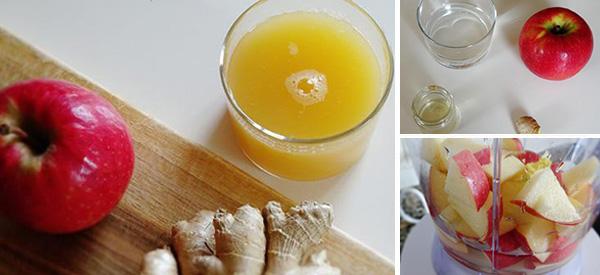
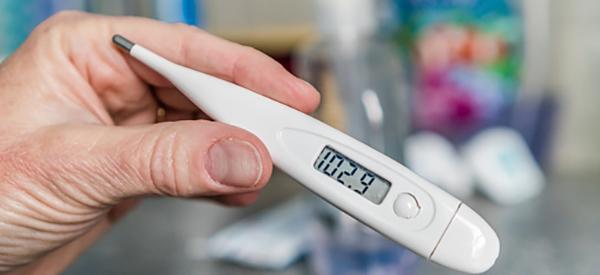

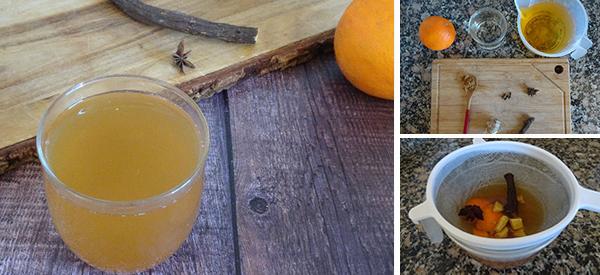

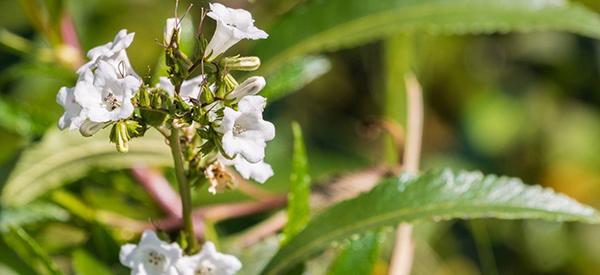
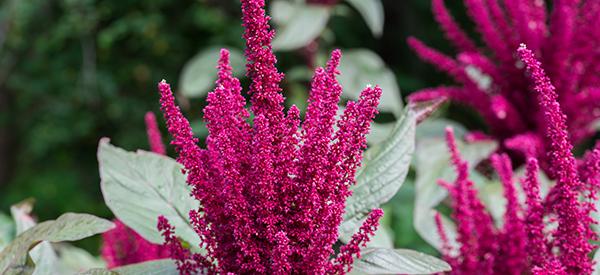
 Fruits: After the flower blooms, it will give way to the devil’s claw fruits. The fruits are woody with long, branched protuberances that have barbs. The inner part of the fruit is also woody, with a fleshy exterior.
Fruits: After the flower blooms, it will give way to the devil’s claw fruits. The fruits are woody with long, branched protuberances that have barbs. The inner part of the fruit is also woody, with a fleshy exterior. Seeds: Inside the seed pods of the devil’s claw are tiny seeds of about 40 per capsule.
Seeds: Inside the seed pods of the devil’s claw are tiny seeds of about 40 per capsule. 2. Heat the mixture in a double broiler with low heat or on ½ power microwave until the beeswax melt.
2. Heat the mixture in a double broiler with low heat or on ½ power microwave until the beeswax melt. 3. Pour the devil’s claw salve into the ready jar and let cool
3. Pour the devil’s claw salve into the ready jar and let cool 4. Cap the salve, label it, and keep it in a cool and dry place
4. Cap the salve, label it, and keep it in a cool and dry place You can use this healing salve for headache, nerve-type pain, lower back pain, and joint pain.
You can use this healing salve for headache, nerve-type pain, lower back pain, and joint pain.
 Basil protects your body from damage caused by toxins, which is why it’s included in a heavy metal detox.
Basil protects your body from damage caused by toxins, which is why it’s included in a heavy metal detox. Place basil, olive oil, Parmesan cheese, pine nuts, garlic, salt, and nutmeg into a liquidizer. Blend until smooth.
Place basil, olive oil, Parmesan cheese, pine nuts, garlic, salt, and nutmeg into a liquidizer. Blend until smooth. Directions:
Directions: Directions:
Directions: Parsley
Parsley 1. Bring a pot of generously salted water to a rolling boil and boil the eggs whole for 9 mins. Drain, cool, peel, and halve.
1. Bring a pot of generously salted water to a rolling boil and boil the eggs whole for 9 mins. Drain, cool, peel, and halve. Other Foods to Eat
Other Foods to Eat Heavy metal detox is something that can be really simple to do with the inclusion of herbs and spices in your food. The ones we have indicated here are some of the best that taste great and have some excellent antioxidant properties.
Heavy metal detox is something that can be really simple to do with the inclusion of herbs and spices in your food. The ones we have indicated here are some of the best that taste great and have some excellent antioxidant properties. You can follow us on:
You can follow us on: